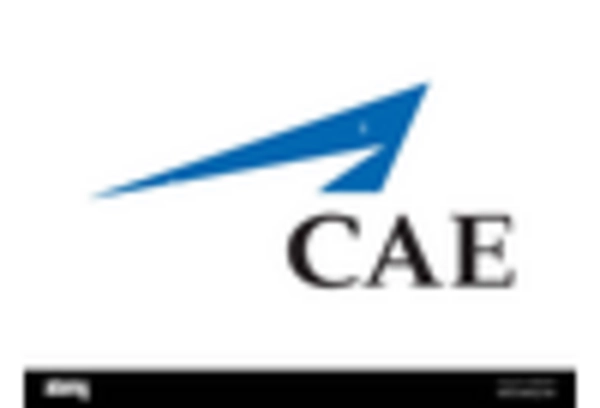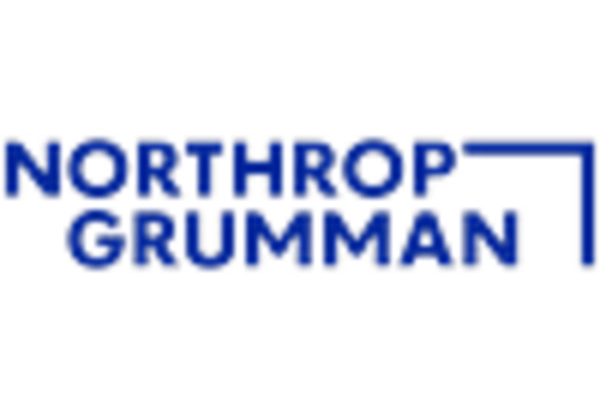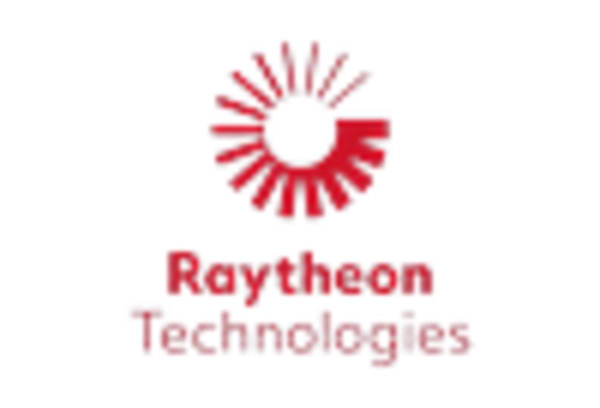Technological Advancements
The Police and Military Simulation Training Market is experiencing a surge in technological advancements, particularly in virtual reality (VR) and augmented reality (AR). These technologies enhance the realism of training scenarios, allowing personnel to engage in immersive environments that closely mimic real-life situations. As of 2025, the integration of AI-driven analytics into training programs is also becoming prevalent, enabling trainers to assess performance metrics in real-time. This shift towards high-tech solutions is likely to attract more investments, as agencies seek to improve training outcomes and operational readiness. The market is projected to grow at a compound annual growth rate (CAGR) of approximately 10% over the next five years, driven by these innovations.
Increased Focus on Preparedness
In light of evolving security threats, the Police and Military Simulation Training Market is witnessing an increased focus on preparedness. Law enforcement and military agencies are prioritizing training that equips personnel to handle complex scenarios, including terrorism and cyber threats. This heightened emphasis on readiness is prompting agencies to invest in simulation training that can replicate high-stress environments. As a result, the demand for advanced simulation tools is expected to rise, with market analysts estimating a potential increase in spending on training solutions by 15% annually. This trend underscores the critical role of simulation training in enhancing operational effectiveness.
Collaboration and Interoperability
The Police and Military Simulation Training Market is witnessing a trend towards collaboration and interoperability among different agencies. As law enforcement and military organizations increasingly work together, there is a growing need for training solutions that facilitate joint exercises and shared learning experiences. This collaborative approach not only enhances the effectiveness of training but also fosters better communication and coordination during real-world operations. By 2025, it is anticipated that the demand for interoperable simulation training systems will increase, potentially leading to a 10% rise in market growth. This trend highlights the importance of unified training methodologies in enhancing overall operational readiness.
Regulatory Compliance and Standards
The Police and Military Simulation Training Market is significantly influenced by regulatory compliance and the establishment of training standards. Governments and military organizations are increasingly mandating specific training protocols to ensure that personnel are adequately prepared for their duties. This regulatory landscape is driving agencies to adopt simulation training solutions that meet these standards. As of 2025, it is estimated that compliance-related expenditures in the training sector could account for up to 20% of total training budgets. Consequently, simulation training providers are likely to see a surge in demand for their services as agencies strive to adhere to these regulations.
Growing Demand for Cost-Effective Solutions
The Police and Military Simulation Training Market is also characterized by a growing demand for cost-effective training solutions. Agencies are under pressure to optimize budgets while ensuring that personnel receive high-quality training. Simulation training offers a viable alternative to traditional methods, as it reduces the need for physical resources and travel expenses. As of 2025, it is projected that the market for cost-effective simulation solutions will expand by approximately 12% annually. This trend indicates that agencies are increasingly recognizing the long-term financial benefits of investing in simulation technologies, which can lead to substantial savings over time.


















Leave a Comment